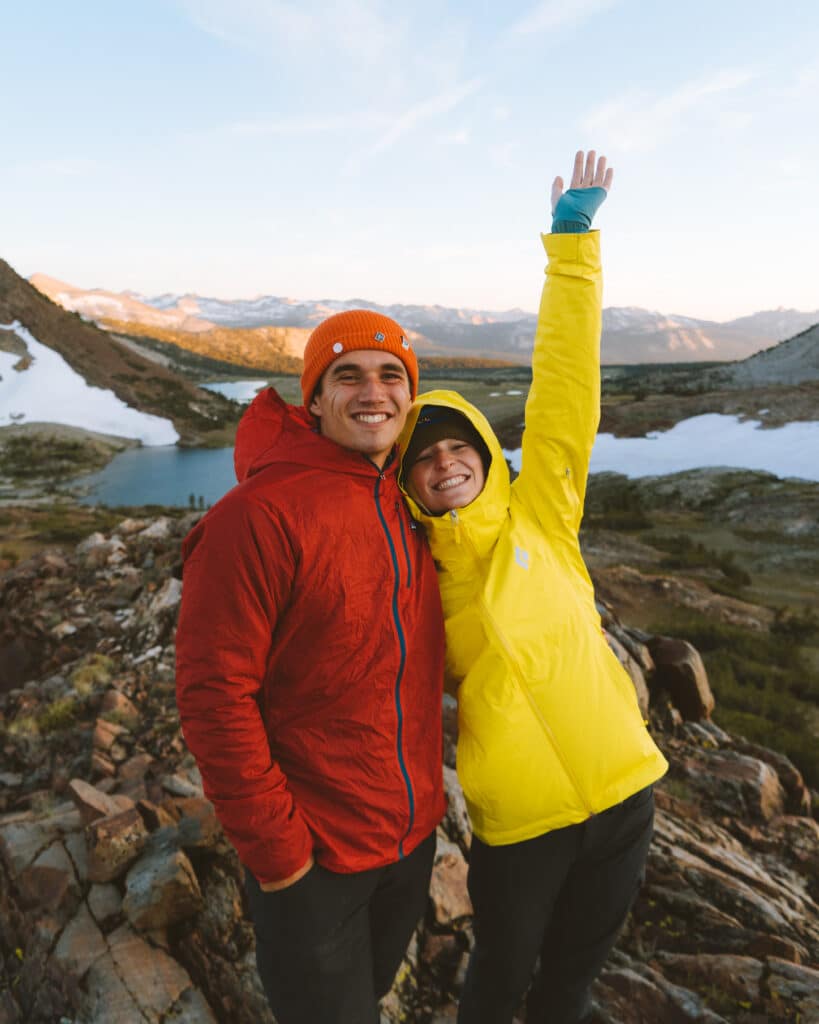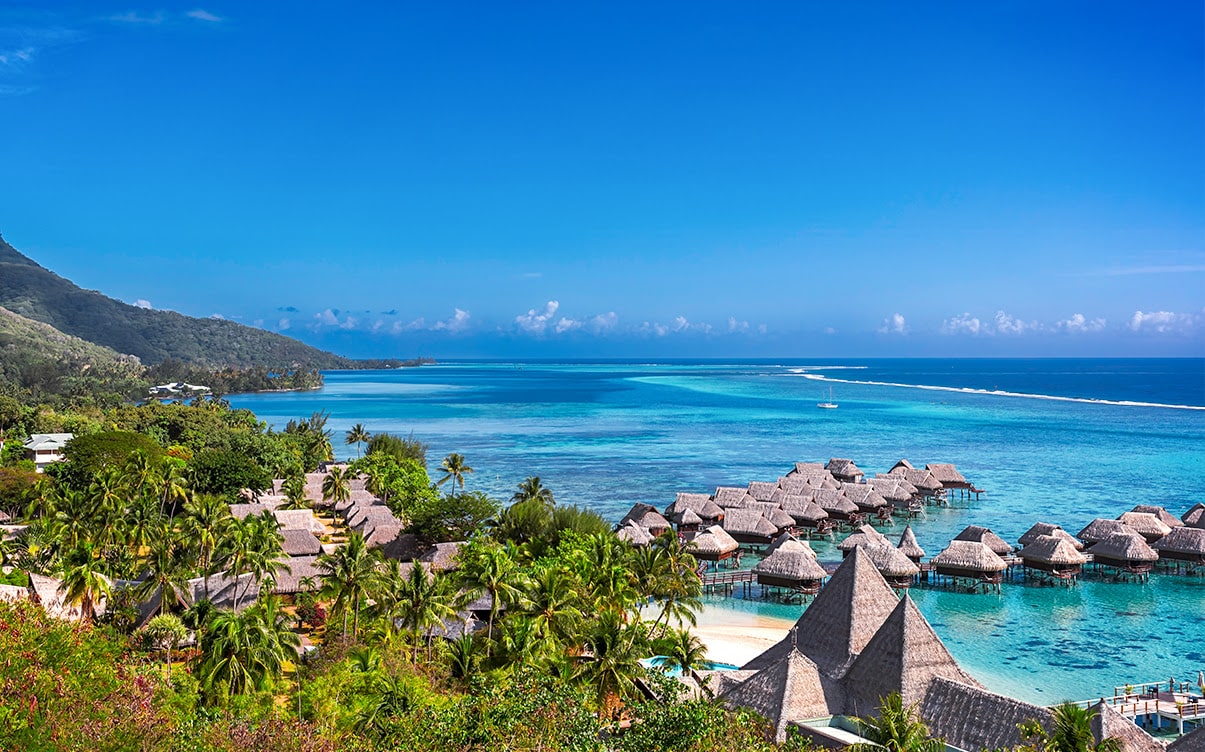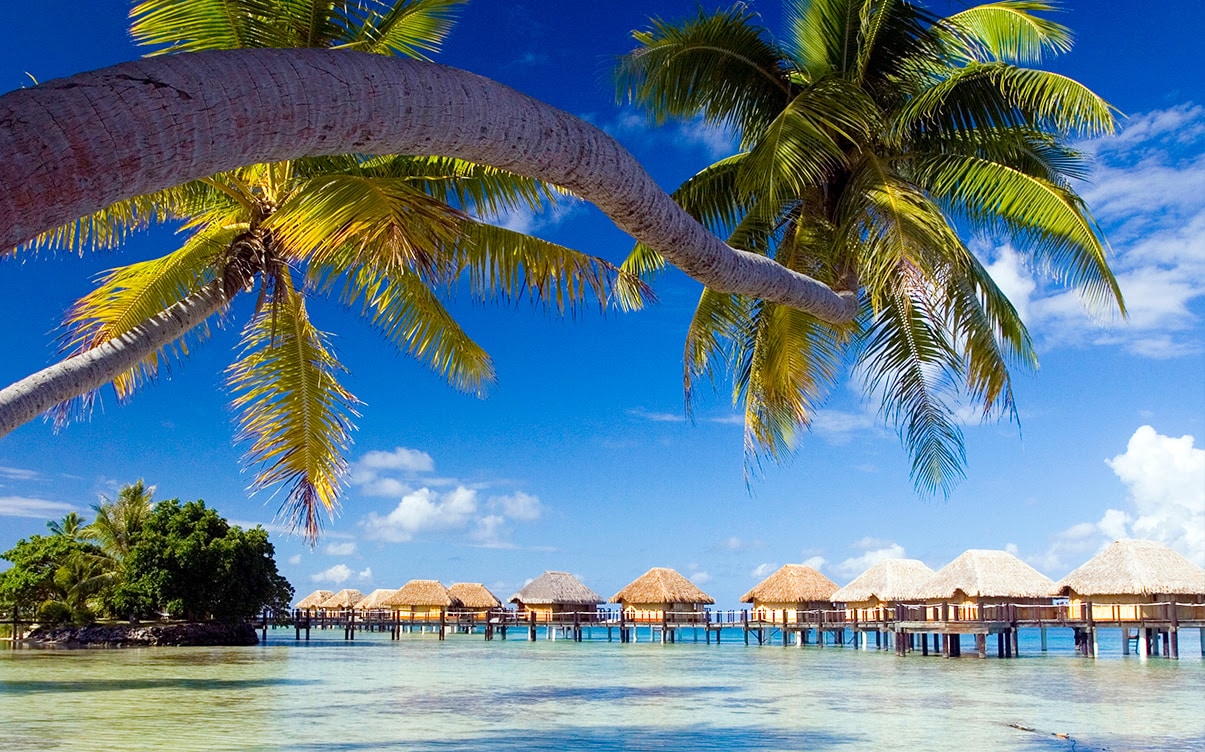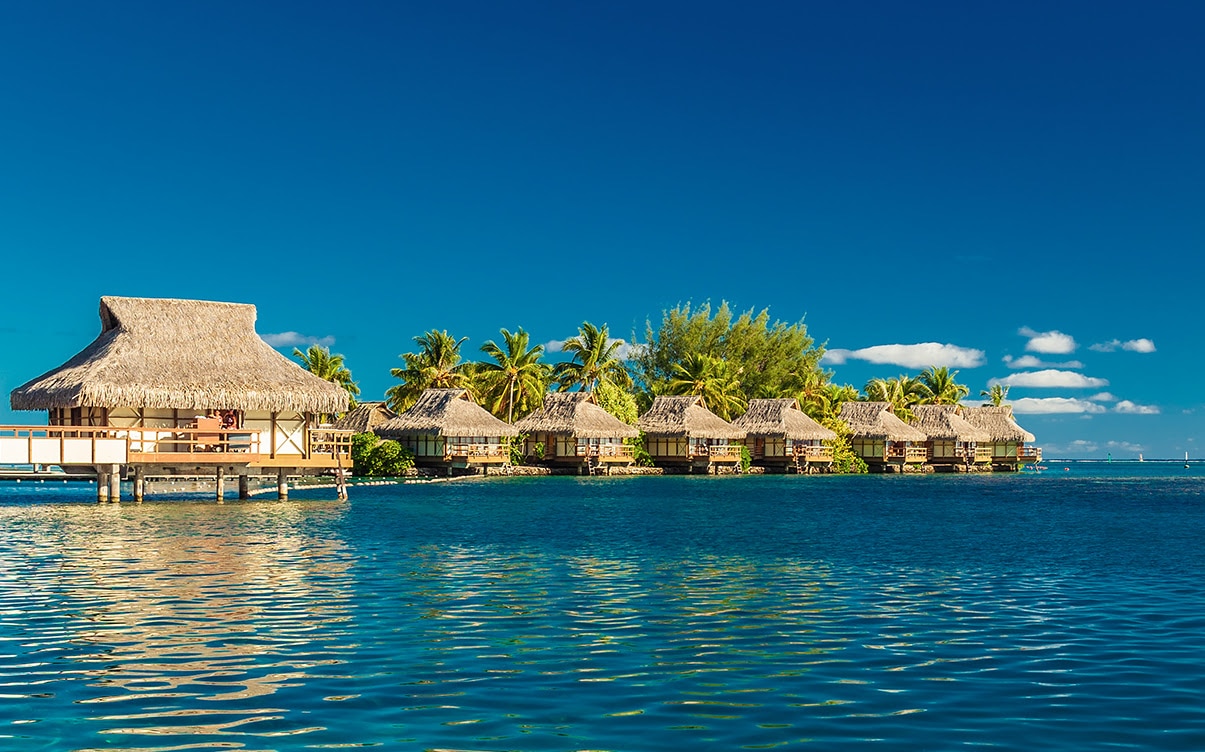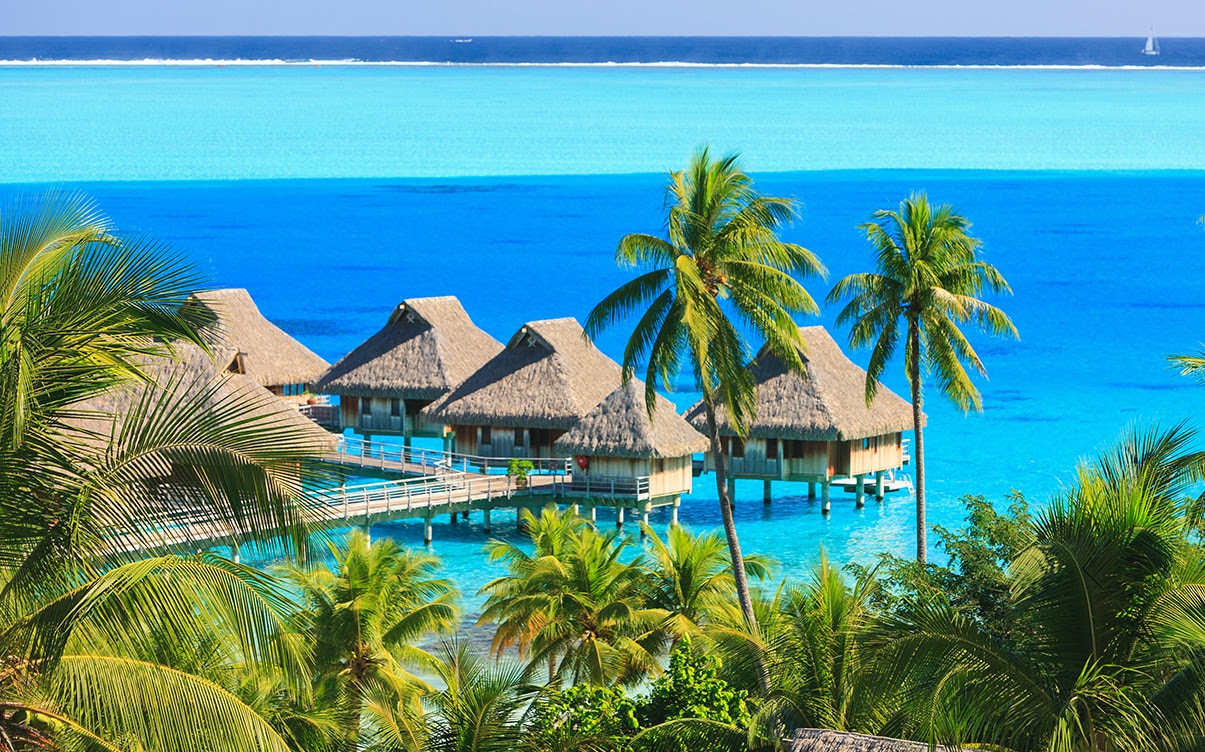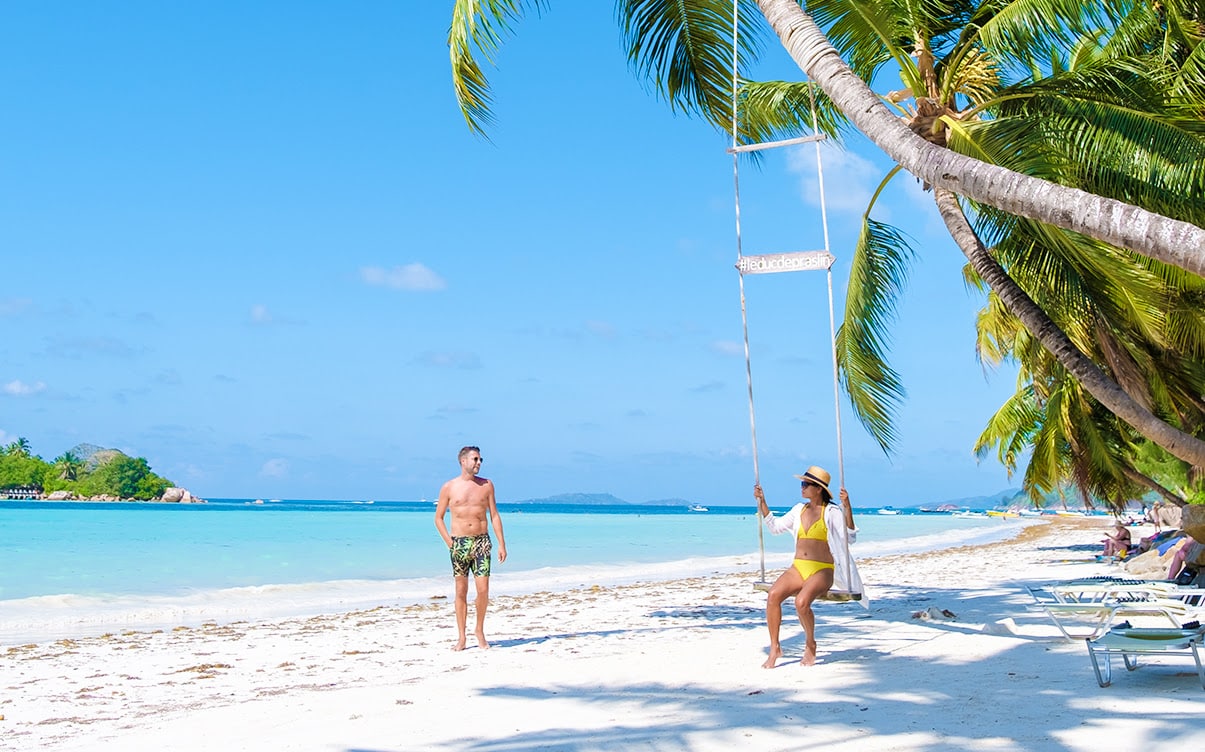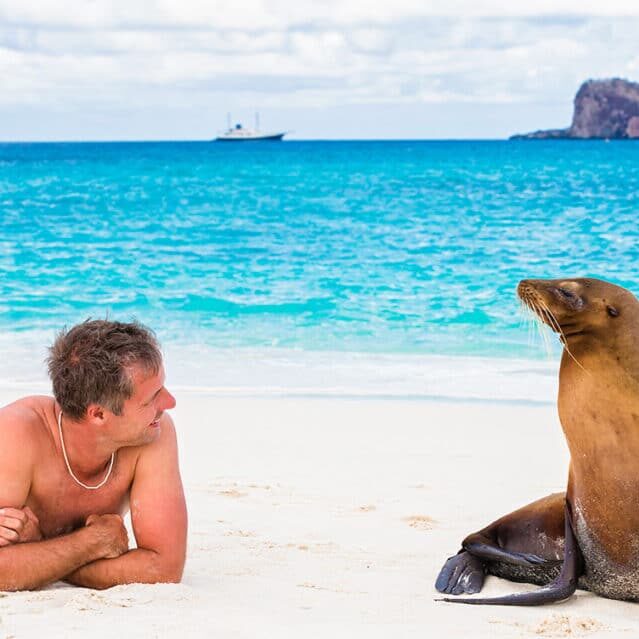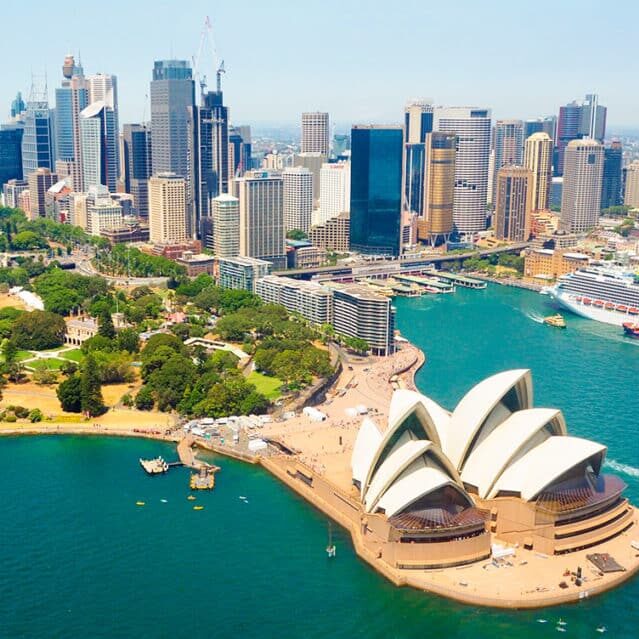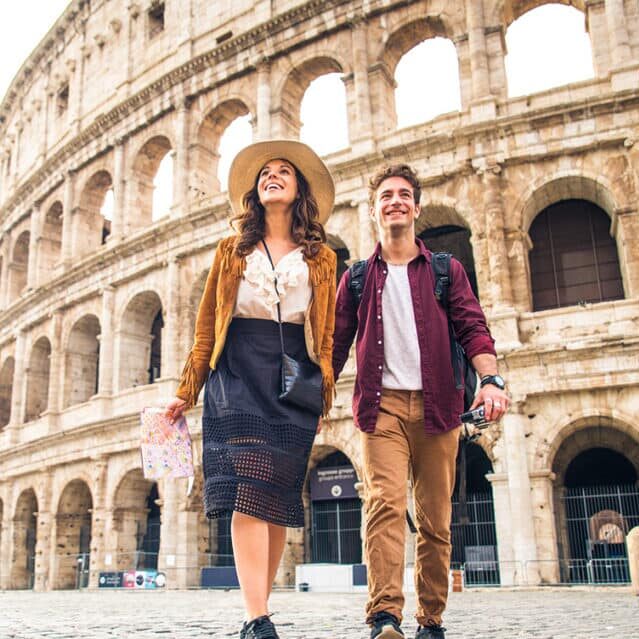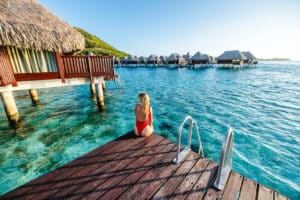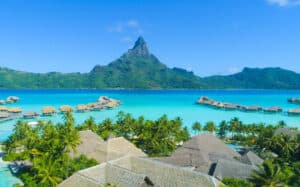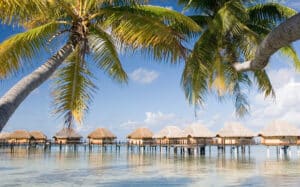What’s The Best Time to Visit Bora Bora, Tahiti, and Moorea?
Disclaimer: This post may contain affiliate links. Please see our Disclosure Policy and Advertiser Disclosure for details.
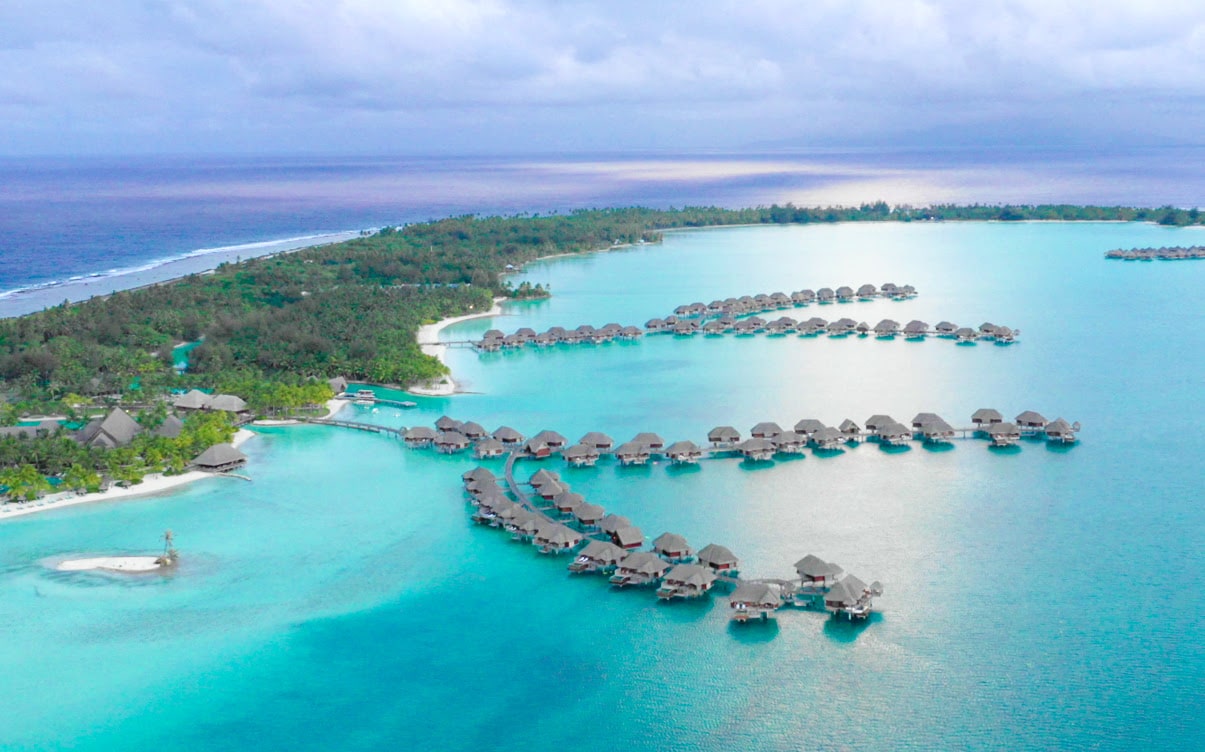
French Polynesia is an incredible destination, a tropical getaway located far away in the south pacific, sort of like the Hawaii of the southern hemisphere. With nearly year-round sunshine, brilliant weather, and over a hundred islands to visit, it’s an unforgettable vacation destination and a place we can’t stop thinking about. Once you visit, you’ll never want to leave.
The question is, when is the best time to visit? You don’t want to book the trip of a lifetime only to find you’re in the path of a typhoon, or you’ve somehow managed to find the one week a year where there’s nothing but gloomy skies and torrential rain.
Fortunately, you have a lot of leeway, so let’s talk about when the best time to visit the islands is and whether or not it varies based on the island you’re visiting.
The Islands of French Polynesia
French Polynesia is a surprisingly broadly dispersed region of island and ocean. If you took the southernmost island and placed it at the southernmost point of Texas, the most northern island would be all the way up by Minneapolis and then would stretch as far west as Arizona and as far east as Alabama.
Despite being so geographically dispersed, the islands of French Polynesia are divided into five clusters.
- The Austral Islands, the southernmost set of islands, generally closest to Australia.
- The Marquesas Islands, consisting of the tallest and most volcanic of the islands.
- The Gambier Islands, arranged in the southeast of the nation.
- The Tuamotu Archipelago, the largest chain of atolls in the world.
- The Society Islands, made up of two clusters – Windward and Leeward – where the bulk of the people live and where you’re most likely to visit.
Among these groups, the Society Islands are the place you’re probably visiting. All of the most famous islands in all of French Polynesia are located here, including Moorea, Tahiti, and Bora Bora. We’ve written more specifically about all three of these before:
- The Ultimate Travel Guide to Moorea: French Polynesia’s Most Underrated Island
- Diving Into Paradise: Tahiti and Its Captivating Archipelago
- All You Need to Know About Bora Bora Vacations
Since all of these are in the same cluster of islands, it’s fairly easy to talk about them all as if they’re essentially the same place. When you fly into French Polynesia, you’ll likely fly into one of these islands and can island-hop between them using short flights or longer boat rides.
What’s the Weather Like in French Polynesia?
The easiest way to illustrate the best time to visit the Society Islands and French Polynesia is to talk about the weather.
First, a look at the average temperatures each month.
| Month | Average High Temperature | Average Low Temperature |
| January | 86.5 F | 74.1 F |
| February | 86.9 F | 74.3 F |
| March | 87.4 F | 74.3 F |
| April | 87.1 F | 73.9 F |
| May | 85.8 F | 72.5 F |
| June | 84 F | 70.2 F |
| July | 82.9 F | 69.4 F |
| August | 82.8 F | 68.9 F |
| September | 83.5 F | 69.8 F |
| October | 88.4 F | 71.4 F |
| November | 85.1 F | 72.7 F |
| December | 85.6 F | 73.6 F |
As you can see, the temperatures are relatively stable all year. Highs almost never break into the 90s or dip below the 80s. Lows, meanwhile, are more variable. From November through April, they’re stable in the low 70s. Then, from May to October, they dip a little colder. It’s still nothing compared to what you get further from the equator, but it’s still quite stable.
Temperature alone doesn’t tell the whole story, though. Rainfall is also an important metric for a tropical island destination. How does that look?
| Month | Average Rainfall in Inches |
| January | 12.41 |
| February | 9.17 |
| March | 7.69 |
| April | 5.54 |
| May | 3.62 |
| June | 2.37 |
| July | 2.38 |
| August | 1.89 |
| September | 1.82 |
| October | 3.57 |
| November | 6.38 |
| December | 12.48 |
June through September are the driest months, with barely any rainfall. Two inches of rain for a whole month is barely more than a daily mist. April and May, as well as October and November, are “shoulder” seasons where the transition is happening; they’re wetter but still not too bad. Meanwhile, December, January, and to a slightly lesser extent, February and March, are the wet season, with as much as half an inch of rain per day – or more torrential downpours less frequently.
All of this data comes from US News and World Report, which, in turn, was sourced from the National Climatic Data Center if you want to look for yourself.
Oh, and in case you’re worried about what we mentioned above, typhoons, cyclones, and hurricanes – all of the superstorm formations – generally miss French Polynesia. Due to the way that these storms form over the ocean, they’re further north when they’re forming and further west when they’re strengthening. The rain you experience in Tahiti or Moorea is going to be just normal rainfall.
It’s not entirely impossible for the edge of a cyclone to graze the islands, especially during the rainier season, but it’s relatively rare. They tend to only experience these storms a couple of times a year at most. Full, powerful cyclones hitting the islands are extremely rare, and the last time it happened was in 1982, so you can rest easy on that front.
Be aware, though, that in recent years, the jet stream, the ocean currents, and other major weather factors have been changing due to climate change, so the weather may become less and less predictable in the future. It remains to be seen how this will impact French Polynesia.
The Best Time to Visit French Polynesia for Crowds and Pricing
Now, let’s talk about the other storm that descends on French Polynesia: the tourist crowds.
You can generally assume that the better the weather, the more people will be visiting the islands, and the more expensive everything will be. So, December, January, and February are going to be the least busy and the least expensive. You can often expect to save $100-$200 a day on your lodging, and various activities are generally cheaper during these times as well.
Hint: You can save a lot on airfare and lodging by using a travel credit card, saving up points, and spending those points on your tickets or lodging with participating resorts. To learn more about using travel miles and points, check out our guide here.
The downside to visiting during the rainy season like this is that a lot of the experiences you might want to have can be rained out or canceled due to storms. You can’t really go out diving with the sharks if the waters are churning and dark, and many boats will avoid going out to sea at all if there’s a risk of lightning.
During the high season, when the weather is the best, everything – from food to lodging to flights to activities – is going to be more expensive, and sometimes much more expensive. A lot of it will need to be booked in advance. Otherwise, it will be full up, and you won’t get the chance to do what you want to do. There are, on average, 2-3 times more tourists in the high season than during the rainy season, so you can expect to be wading through crowds anywhere there’s a hub of activity.
Your bungalows will be nice and private, at least, and while you’ll probably overhear some noise from your neighbors or a party on the shore, you aren’t going to be dealing with rambunctious crowds in a crowded hotel the same way you might in other tourist destinations. And, given how exotic these destinations are (and how expensive it can be to take the trip out), a dense crowd in French Polynesia might not be all that dense if you’re used to much more inhabited cities, especially places like Tokyo and Kyoto or the denser European cities.
If you were hoping to have a whole beach to yourself, well… that’s actually still possible, but you have to work for it. There are over a hundred islands in French Polynesia, and most of the tourists are going to be clustered around the same few. You can book a boat and sail off to one of the more isolated islands and have a nice time on a beach largely to yourself.
Picking Between the Islands: Bora Bora, Tahiti, or Moorea?
Another significant decision you’ll need to make is which of the major islands you want to make the hub of your visit. You can always go island hopping, and many people choose to spend a few days in a resort on one before moving to spend a few days in a different resort on another, but if you only have the time or the luxury for one location, which should you pick?
Tahiti has several resorts but relatively few overwater bungalows if those are a primary attraction for you. They aren’t completely absent, but they are scarce and frequently booked up well in advance. That said, Tahiti is a larger island and has the best shopping, local culture, and local attractions. It’s also one of the better locations for on-land activities and some of the seasonal festivities you might want to attend and experience.
Bora Bora is much more of a resort hub. They have nearly a dozen different resorts and a ton of overwater bungalows, including some of our favorites. Since Bora Bora is the home of Mount Otemanu, nearly every picture you take will be instantly iconic. Bora Bora is one of the best islands to visit if you want more of the watery side of life, with boating, snorkeling, and diving opportunities galore.
Moorea, meanwhile, is sort of between the two. For one thing, it’s literally between the two, just off the coast of Tahiti. It’s larger than Bora Bora but smaller than Tahiti. It has more resorts than Tahiti but fewer bungalows on the water (but still plenty if that’s your goal.) It’s also packed with tourist activities, including dolphin swims, ATV trails, zip lines, swimming with sharks and stingrays, plenty of hiking, and a whole lot more. It’s often overlooked because of how touristy it is, and it can feel a little over-commercialized sometimes, but it’s also generally more budget-friendly if you don’t want to shell out for the ultimate luxury experiences.
There are also a bunch of other island options in French Polynesia, especially the Society Islands, that you can visit. The three we list here are the most famous, but they’re definitely not the only options available to you. Feel free to shop around!
The Best Times to Visit Tahiti, Bora Bora, or Moorea
Honestly, let’s be real here: the best time to visit these islands is any time you can swing it. December and January are likely to be the least pleasant, but even an unpleasant time in a tropical resort is still going to be a lot nicer than a lot of other places you could visit in the off-season.
If you have a high tolerance for rain, you’re willing to adjust your plans due to weather, and you don’t mind cooler nights and humidity, the low season is a great option. It’s going to be a lot less crowded and somewhat cheaper than the high season, but you need to be willing to weather the storms.
If you have a high tolerance for crowds and a decent budget, visiting during the high season is what most people do. May is generally the peak, and airfare prices reflect that, being 30% higher in May than in any other month in general. Other prices can be similarly higher, though the earlier you book in advance, the more you can potentially save.
For our money, the best bet is actually the shoulder seasons. March and early April, or late September through early November, are the transition periods. They’re less expensive, a little rainier but not too bad, and less crowded across the board. They’re the best middle ground if you can find the time off and the budget to visit.
Whatever you do, don’t miss out on these spectacular islands. It’s always an incredible trip visiting French Polynesia, and you’ll be ready to plan your second trip on the plane ride home from the first one.
You may also enjoy:
